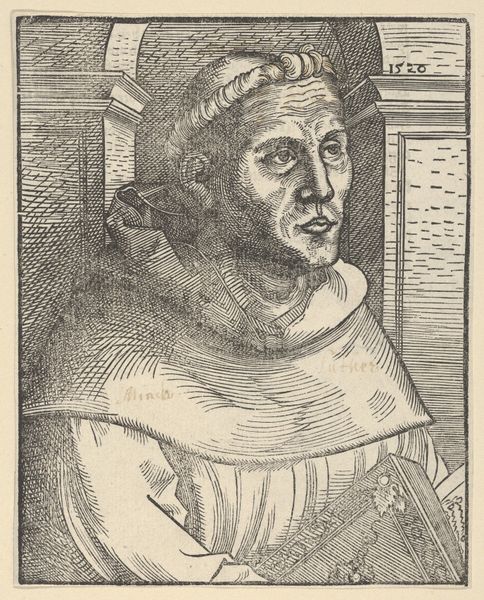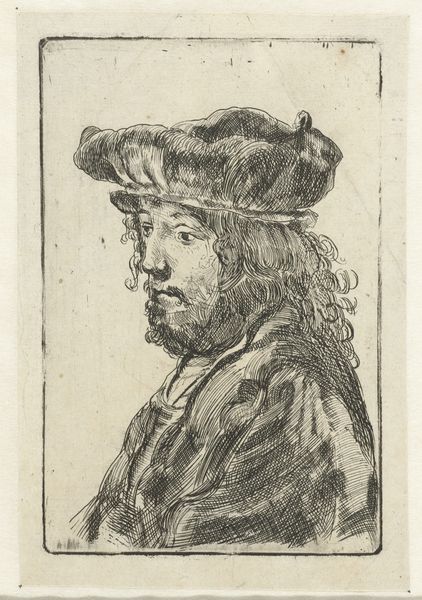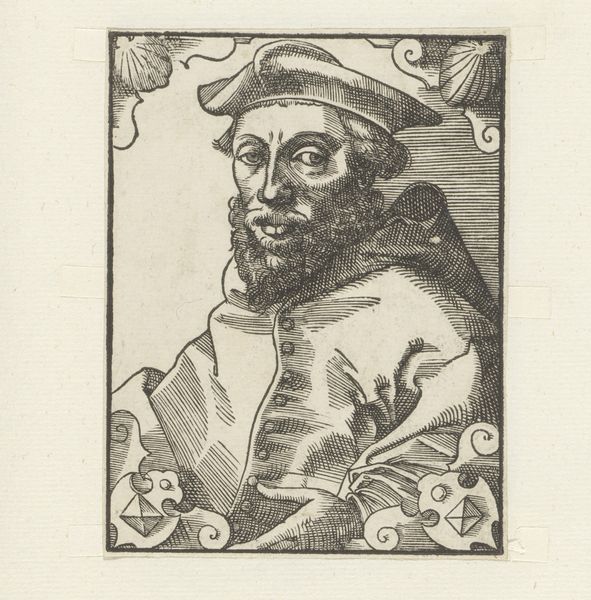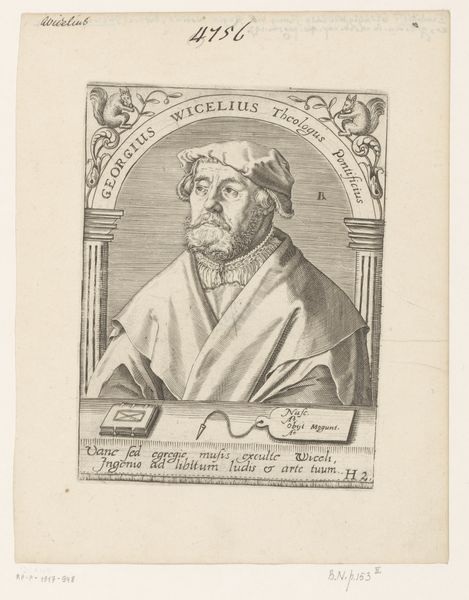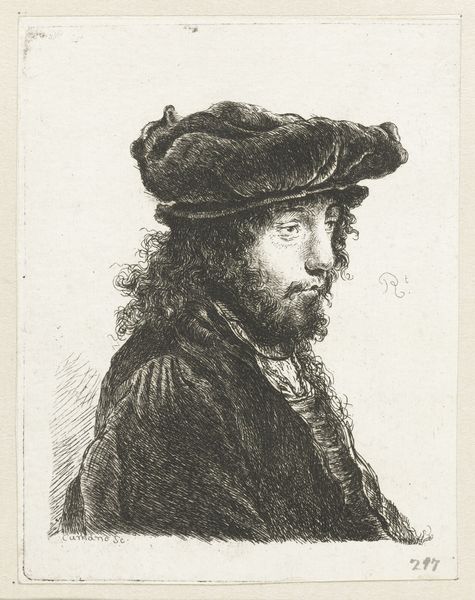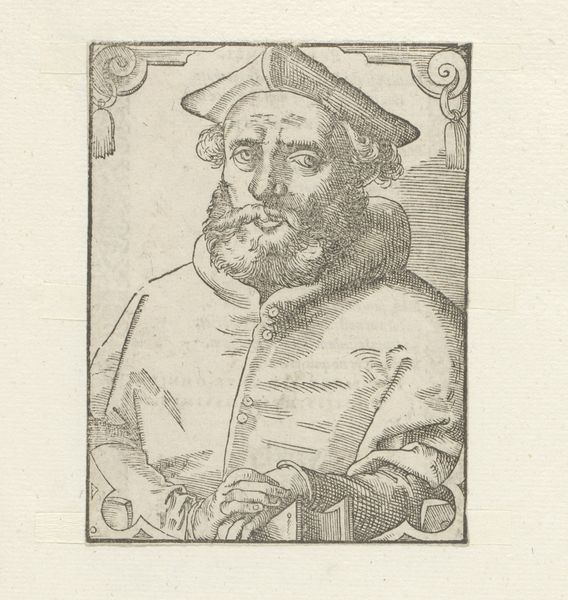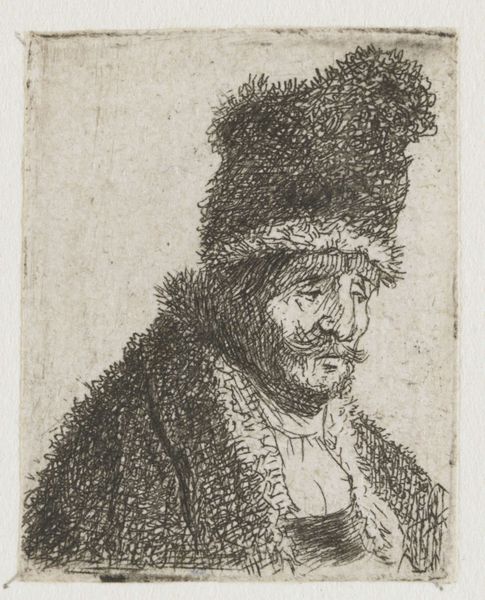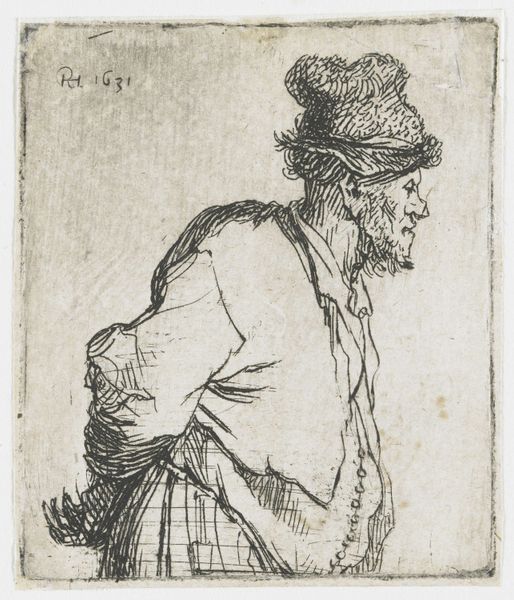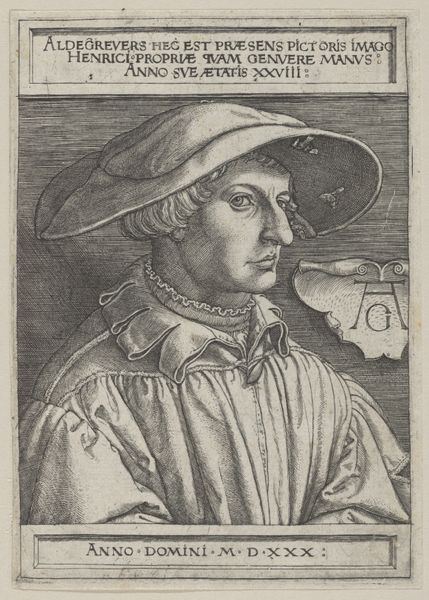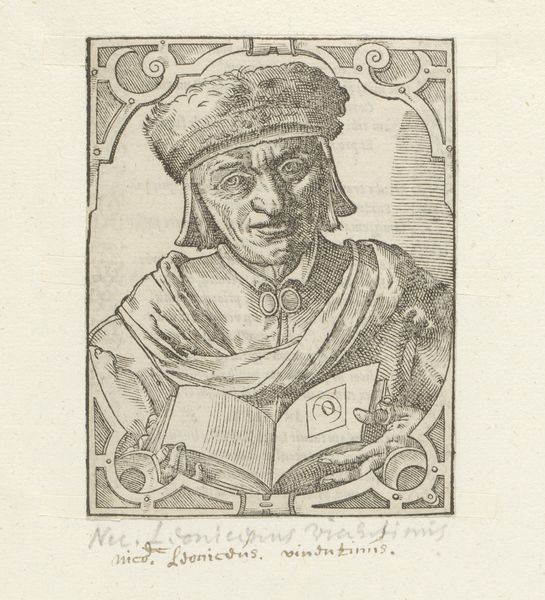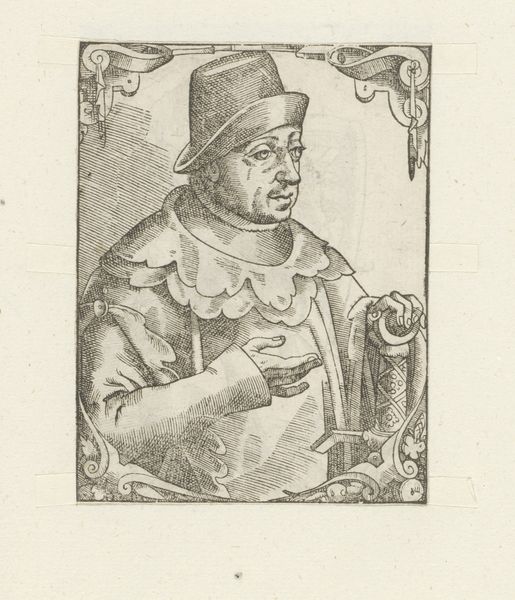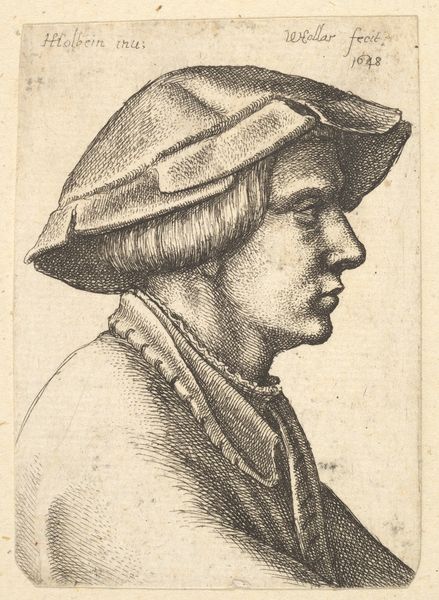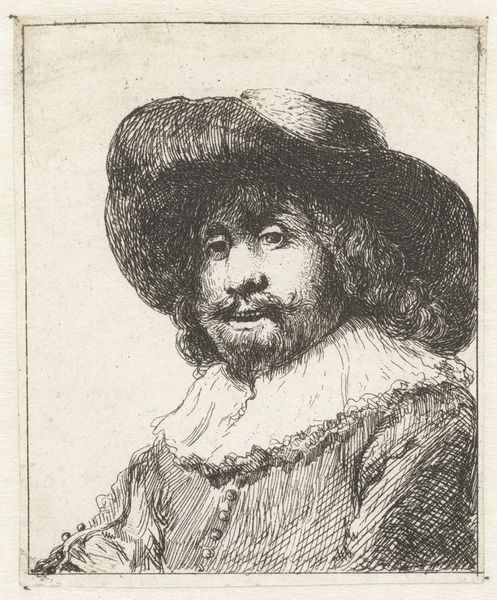
drawing, print, engraving
#
portrait
#
drawing
# print
#
history-painting
#
northern-renaissance
#
engraving
Dimensions: Sheet: 4 7/8 × 3 1/4 in. (12.4 × 8.3 cm)
Copyright: Public Domain
Curator: What a severe looking fellow! All those meticulous lines give him a serious gravitas, don't you think? Like he's pondering the weight of the world. Editor: That's an interesting observation. This engraving is by Lucas Cranach the Younger. It's entitled "Portrait of Johann Georg Viberg" and scholars believe it was likely completed sometime between 1515 and 1586. It is now housed at the Metropolitan Museum of Art. Curator: Ah, Cranach the Younger! You know, I feel like there's something deeply honest in the direct gaze. His eyes seem to bore right into you. It’s Northern Renaissance seriousness at its finest. Plus that teeny triangle in his hand is so odd, I’d love to know what that is all about. Editor: It is fascinating how these portraits serve as more than just depictions, becoming coded messages about the sitter’s status, beliefs, or profession. The subject of this engraving, Johann Georg Viberg, might have commissioned this to promote a certain image, particularly during the turbulent times of the Reformation. He probably sought to demonstrate that he was both pious and steadfast, what with that solid gaze and perhaps the triangular symbol as some sort of symbolic statement. Curator: Maybe a stonemason, or just a geometry lover? Ha! It tickles me to think about him meticulously posing with his little triangle, carefully directing the angle. I picture the scene playing out like that Monty Python sketch where they were trying to take Rembrandt’s photo. Editor: Perhaps. Consider how prints also democratized imagery. Once these portraits would have been reserved for the wealthy. Now they could be circulated more widely to shape and reinforce power dynamics of the period. Curator: Even now I find it incredible that this piece has journeyed over centuries for me to gaze at, wonder about, and be inspired by. Makes you feel like a link in an amazing unbroken chain, doesn’t it? Editor: Absolutely. It's in moments like these that the museum transforms into a crossroads of history. A meeting place for understanding our human experience and culture and how images can play into that understanding.
Comments
No comments
Be the first to comment and join the conversation on the ultimate creative platform.
